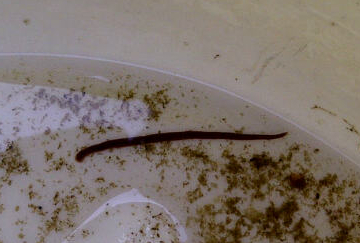


In order to revise the Lake Baikal leech fauna, the most recent target investigations have worked towards clarifying the taxonomic status of various species as well as adding to the species list with new records ( Kaygorodova 2012, 2013 Kaygorodova and Natyaganova 2012 Kaygorodova and Utevsky 2012 Kaygorodova and Pronin 2013, Kaygorodova et al. Since, in addition to the above, the following papers on the Baikal leeches have been published: Dogiel et al. The same authors then created a new subfamily ( Toricinae), which included the genus Baicaloclepsis Lukin et Epstein, 1960 and newly established Paratorix ( Lukin and Epstein 1960b). Subsequently, Lukin and Epstein (1960a) described a new genus ( Baicaloclepsis) and a new species ( Baicaloclepsis grubei), the first leech record from the Maloe More Strait. No publications on Baikal leeches appeared for the subsequent 35 years until the description of a new endemic genus and species Baicalobdella cottidarum ( Dogiel and Bogolepova 1957), found on cottoid fish. Next, the endemic “flat” leech Torix baicalensis Shchegolew, 1922 (now Paratorix baicalensis) was discovered by Shchegolew (1922) in collections from 1916, but the host remains unknown. Later, the famous Russian scientist Nikolai Livanow, studying Baikal samples, described the species Protoclepsis tesselatoides Livanow, 1902, which has some morphological differences from the Palaearctic Protoclepsis tessulata (Müller, 1774) (now Theromyzom tessulatum) parasitizing waterfowl. Non-parasitic leeches of Lake Baikal were excluded from any scientific interest for a long time due to their belonging to the common Siberian faunal assemblage, and the scientific pursuit of unique endemic elements. Clepsine echinulata Grube, 1871 (now Baicaloclepsis echinulata (Grube, 1871)), Piscicola torquata Grube, 1871 (now Baicalodbella torquata (Grube, 1871)) and Codonobdella truncata Grube, 1873 may have been the first freshwater leeches recorded from Lake Baikal, but their host relationships had not been identified. 2011), as well as hematozoa including trematodes, cestodes and nematodes ( Demshin 1975), and parasitic flagellates ( Khan 1976, Khamnueva and Pronin 2004, Burreson 2007), which are considered to be pathogenic organisms for aquatic animals.Īn exploration of the Baikal parasitic leech diversity was begun by pioneering 19 th century German zoologist Adolf Eduard Grube. Being epizoic parasites, they have relevance to transmission of bacterial and viral infections (e.g. The second group consists of parasitic forms, which constitute the main part of the leech diversity, and their role in ecosystems is absolutely different. Macrophagous leeches are rarely found in hydrobiological collections therefore, their abundance has not been taken into account and their role in ecosystems has often been undervalued.

This may be attributed to peculiarities of their habitation and consequently of their sample collection. This role is obviously underestimated at present. These leeches have a large size relative to other freshwater invertebrates and a high density in the littoral zone of reservoirs and lowland streams making them critical to fish nutrition. The first group includes macrophagous leeches. In fresh and brackish waters, some leeches serve as invertebrate predators while others are infamous for their ability to feed on the blood of either invertebrates or vertebrates. The Baikal leeches ( Hirudinea) are one of the least studied groups of invertebrates due to underestimation of their role in aquatic ecosystems and intractability of their taxonomy.


 0 kommentar(er)
0 kommentar(er)
